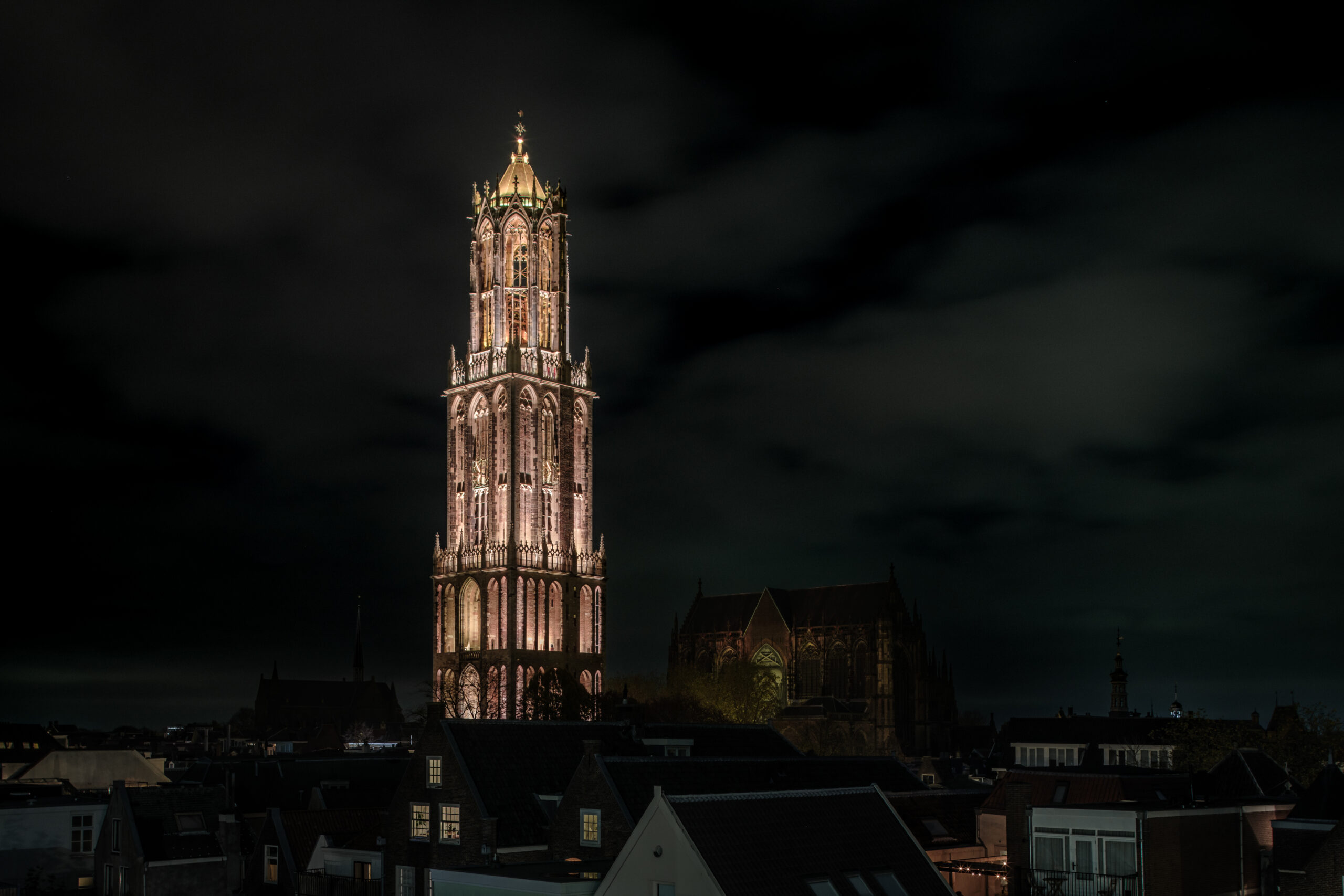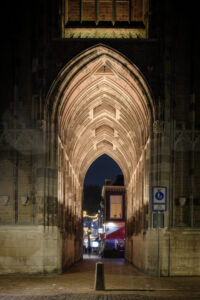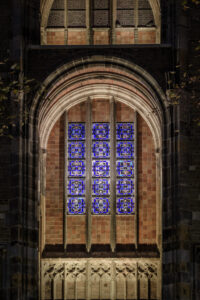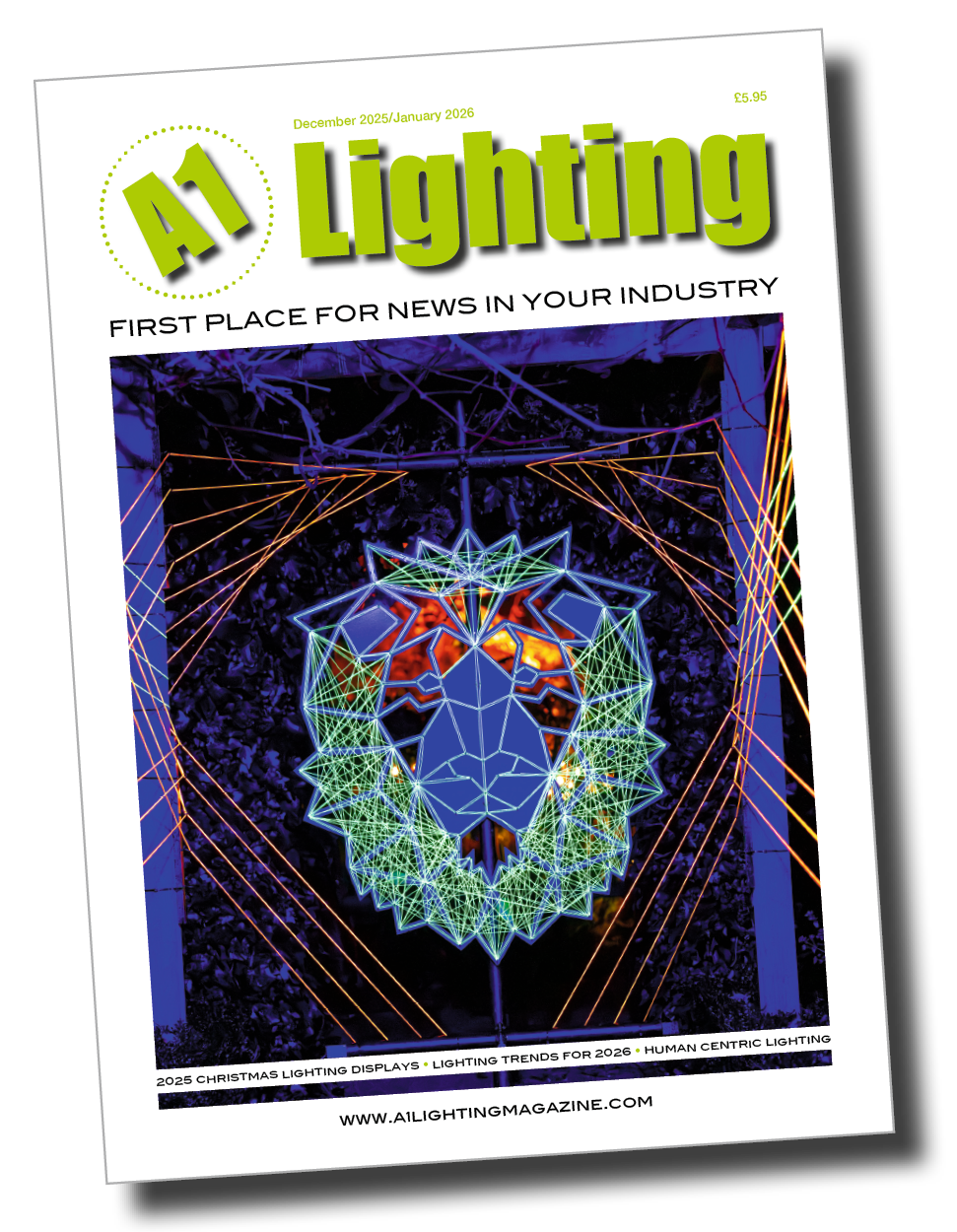
On 9th November 2024, a switch on of the new lighting design by Speirs Major Light Architecture by Queen Maxima of the Netherlands marked the end of a five-year restoration of the Dom Tower in Utrecht.
The new permanent illumination by SMLA is an evolution of their award-winning 2013 light art installation, transforming the tower’s image from a solid daytime landmark into a vibrant, open beacon after dark.
Each level ascended grows progressively lighter and more transparent, celebrating the tower’s Gothic heritage, while added flexibility enhances its role as a community symbol.
Through careful design and consideration for sustainability and environmental impact, the updated lighting ensures the Dom Tower remains an engaging part of Utrecht’s skyline, bridging its historic past to a luminous future.
In 2013, SMLA were commissioned to develop an art installation for the iconic 14th Century 112m high Dom Tower as part of the city’s light-based art trial, Trajectum Lumen. The commission saw the Tower come to life as a living monument, appearing to ‘breathe’ and communicate through light with Utrecht. The installation opened to commemorate the 300-year anniversary of the signing of the Treaty of Utrecht peace accord, winning several awards. It remained in place for five years until the start of Tower renovation works in 2019.
In 2022 Utrecht’s city council agreed to re-instate a new lighting scheme, offering SMLA the unique opportunity to reimagine and evolve their work into a permanent design. The new brief extended the scope beyond an art installation into a broader set of interests from community stakeholders, A mirror group that included Utrecht’s mayor and other city representatives, heritage specialists and architects, residents and citizens was formed to feed into the design process.
SMLA Senior Partner and CEO Keith Bradshaw elaborates, “We listened very carefully to the mirror group, as we wanted our design to reflect their passion for the history and architectural significance of the Tower, its importance within the fabric of the city, and to make a meaningful contribution to the contemporary life of Utretcht’s citizens.

We created a concept that lights the Tower from within, bringing out the building’s three-dimensional qualities. This internal light also plays up the building’s architectural richness at night, revealing key Gothic architectural details usually obscured by shadows in natural light. The Gothic aspiration to reach for the sky is reflected in the illumination of the vaulted ceilings, and in the way the lantern structure at the top is illuminated on the outside as well as the inside, so that it appears more transparent and lighter.
The new design also celebrates the unique stained-glass windows in the Chapels. During the day, the colours of these windows are imperceptible from the outside. Now, backlighting reveals their vibrant colours when looking towards the Tower from Dom Square or the ‘Servetstraat’ after dark. This detail remains lit for one hour after the main lights are switched off at 11 pm, which allows the windows to become the centre of attention for a brief period each day.
We deliberately left the base of the Tower unilluminated other than the underpass to create a solid base above which the more intricately detailed upper layers appear to float.”
One prominent point from the community feedback was the desire to explore how the lighting could allow the Tower to take a more active role in the community.
Keith continues: “It became very clear to us that the people would like to see the Tower engaging more with the current world as a living part of the city’s narrative. We suggested including the facility to change the colours on a select number of days in the year to celebrate special events and occasions. The council decided that the days and events would be agreed upon by vote to ensure that these truly reflect the diverse cultural tapestry of Utrecht.”
With all the lighting including the built-in facility for colour change, it is possible to create almost any scene across the faces of Tower. The Netherlands national flag and the Utrecht flag were shown, among other designs, during the switch-on ceremony.
Achieving the aims of the lighting brief has been carefully balanced with responsibilities to the environment, ecology, and neighbours.

Associate Partner Benz Roos explains: “We kept light levels and energy use as low as possible without losing impact, selecting more ecologically friendly warm light sources, and reducing the amount of light spill into the sky through design, fixture placement, optical technology, and timed controls.
We also re-used as much of the product from the 2013 installation as possible for sustainability reasons. This involved a considerable effort in sorting, cleaning, and upgrading the light sources of the equipment to be suited to the new scheme, as well as reconfiguring the installation method to suit the new, permanent installation.”
Since switching on, the new flexible lighting of this beloved tower has been well received by locals and visitors alike.
Keith concludes: “It is a rare honour to be able to work on a heritage projects, but it is unique to work with the community of the city to use light as a metaphor and communication tool within the context of an historic monument. This feels like a new kind of project, where sensitive yet progressive lighting techniques have created a bridge between the past and the future.”
Client: City of Utrecht.
Heritage Architect: Rothuizen.
Project Manager: Antea Group, Ralph Backer.
Lighting Design: Speirs Major Light Architecture – Keith Bradshaw, Benz Roos, Adrien Flouraud, Iain Ruxton.
Main Contractor: Nico de Bont.
Electrical Contractor: Vansantvoort.
Images: Couresty of Speirs Major Light Architecture.
Photography: Jelle Verhoeks.













